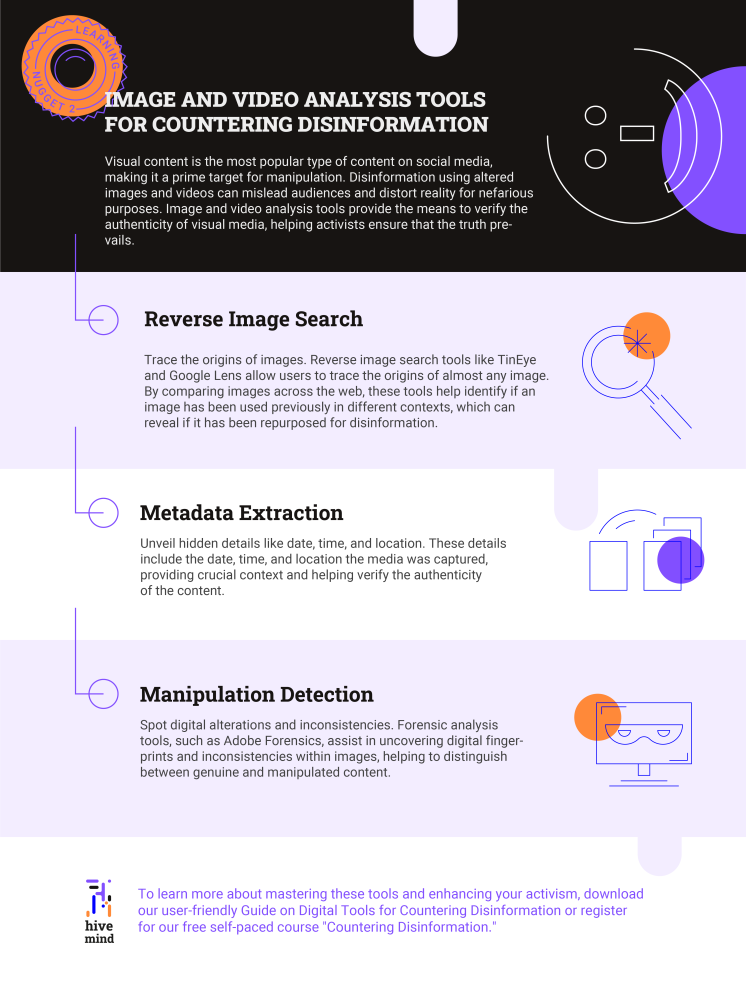Visual content is the most popular type of content on social media, making it a prime target for manipulation. Disinformation using altered images and videos can mislead audiences and distort reality for nefarious purposes. To combat this, image and video analysis tools provide the means to verify the authenticity of visual media, helping activists ensure that the truth prevails. Learn how to do so in our new Guide on Digital Tools for Countering Disinformation
How to trace the image origins?
Reverse image search tools like TinEye and Google Lens allow users to trace the origins of almost any image. By comparing images across the web, these tools help identify if an image has been used previously in different contexts, which can reveal if it has been repurposed for disinformation.
How to find hidden image details?
Metadata extraction tools, such as Forensically and InVID, uncover hidden details embedded in images and videos. These details include the date, time, and location the media was captured, providing crucial context and helping verify the authenticity of the content.
How to spot the fakes?
Advanced tools like InVID and Forensically can detect manipulations within images and videos. These tools analyze digital fingerprints, look for inconsistencies, and highlight alterations, such as cloned objects or unnatural color patterns, ensuring that manipulated content is identified and could be debunked.
The Power of the Tools!
Image and video analysis tools are essential for maintaining the integrity of visual information in the fight against disinformation. By leveraging these tools, you can verify the authenticity of media, detect manipulations, and ensure that the truth is accurately represented.
